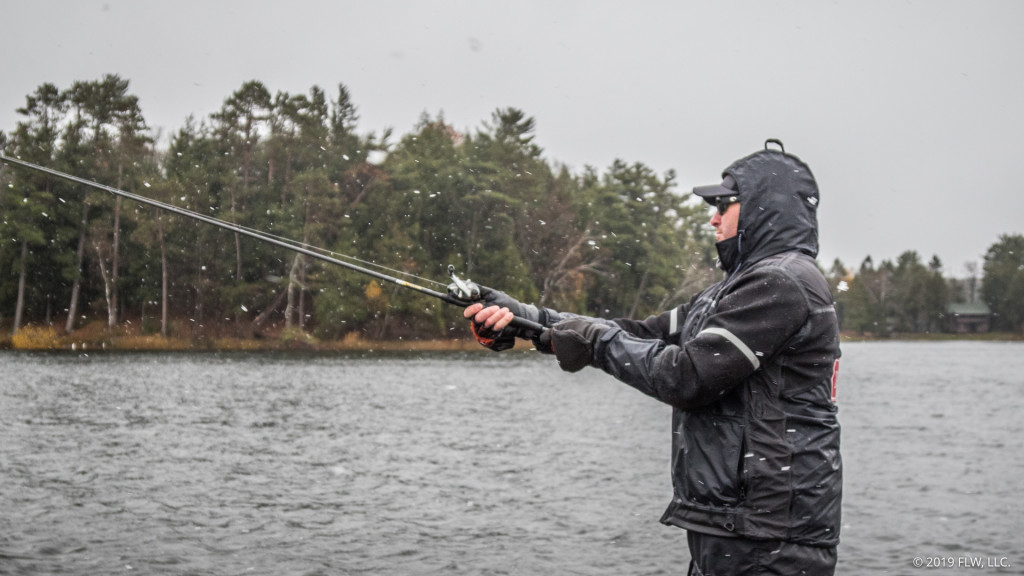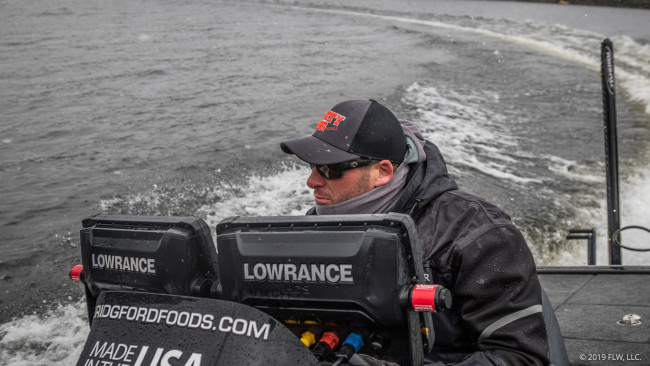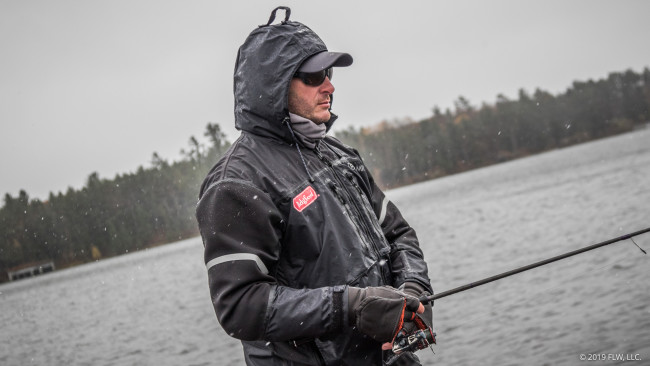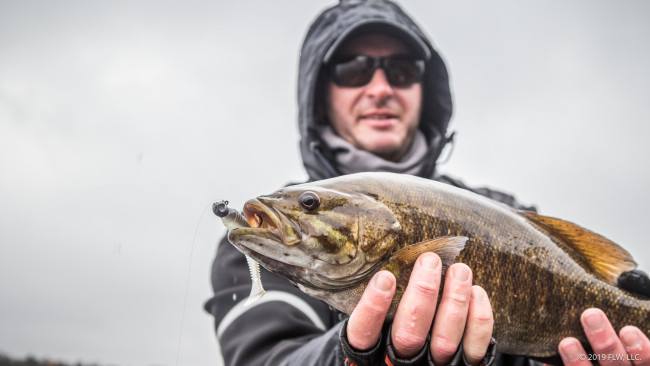Hunting Big Bronze in Wisconsin
How Matt Stefan targets the biggest smallmouths of the season

Matt Stefan has high standards for fall smallmouth fishing.
“On a normal day, if the best five aren’t over 25 pounds, it isn’t a good day,” he says. “My best days with a buddy have been where the best five have gone 29 to 32 pounds. We get lots of 6-pounders a year, and we’ve caught some right at the 7-pound mark. I’ve had a few on that we haven’t landed that were bigger.”
Stefan is talking about giant Wisconsin smallmouths, but he’s not hitting up Chequamegon Bay or Sturgeon Bay to do it. He’s fishing within an hour or so of his Junction City home in central Wisconsin.

Finding Big-Fish Lakes
Big smallmouths are pretty much a given on the Great Lakes these days, but it takes a little scouting for inland Wisconsin. For Stefan, it starts with research on the forage and blossoms from there.
“You’re looking for oily fish: alewives, whitefish, ciscoes,” says Stefan. “And those fish live in the deeper, clear-water lakes. It seems like the more deep water, the better, in terms of bass size. I’m looking for the biggest fish around. For whatever reason, the deeper the lake, the bigger the fish. Deeper lakes usually have fewer weeds and are more oligotrophic-style lakes [lakes lacking in nutrients and vegetation], and from a fishing standpoint I prefer those barren lakes.”

Locating Bass
Once Stefan identifies a good lake the fishing is simple enough. It requires patience and a willingness to brave cold weather as the season progresses. He likes to target the biggest smallmouths when they’re basically in their wintering spots. That’s usually when the water temperature is in the 40s and the air temperature registers about the same.
“I’m usually looking at the deepest water that comes up to a point or a hump, and the wintering fish will set up on a deep flat spot on that area,” Stefan says. “More than anything, the water color dictates the depth where they’ll winter. In darker water the deep fish will be in about 20 or 30 feet. But in clearer lakes you can catch them down to about 50 or 55 feet of water.”
Finding the best spots in the lake is a process, and though map study helps, you need to do some fishing and looking too.
“You can find fish on just a break, but this time of year you definitely want a harder bottom. I very rarely catch fish on just a sand break. But, I also don’t want big boulders. It seems like they want gravel with some baseball- or basketball-sized rock mixed in.”
Stefan says he’s caught plenty of fish that come up with particles from the bottom on their stomachs – evidence of how tightly they snug down to the lake floor.
One plus of late-fall smallmouths on inland lakes is that the gains you make one year can translate well to the next.
“When you find a good spot you usually catch multiple fish, and you can go back every year,” says Stefan. “I’ve put in a lot of grueling hours doing this, and you can go back to these places year to year and it’s worth it. If you find one or two spots every time you go to a lake, you might get 10 spots on a lake in a few years. Then you can rotate those spots and have enough to make a trip really worthwhile.”

The Technique
Fishing deep with light line is Stefan’s basic approach for big fall smallmouths.
“I really like to keep bottom contact,” he says. “Generally, I like to use the lightest weight possible for two reasons: It makes you fish slow, and, because the fish are less aggressive, it’s easier for them to suck in a light bait.”
The search starts with heavier baits, though. Stefan might toss a blade bait or an umbrella rig, and then slow down once he really dials in. Then his mainstay is a single 2.8- or 3.3-inch Berkley PowerBait Power Swimmer or Keitech Swing Impact FAT swimbait on a 3/16- or 1/4-ounce Dirty Jigs Guppy Head. An alternative is a small casting jig or drop-shot with a little swimbait or soft-plastic leech.
Fishing deep with light baits takes time to learn and adapt to, but it can pay off. Once you catch one, you can usually catch a lot more. But you have to play it right.
“In my opinion it’s more crucial this time of year to know what your lines [casting angles] are,” Stefan says. “If you get bit and you can make the cast again, chances are good you’re going to hit another on the top of the head.”
For his swimbaits, Stefan uses an MHX HM-MB873 casting rod, 8- or 10-pound-test fluorocarbon, and a lot of patience. In windier weather, he’ll occasionally upsize to a heavier head or swap to a spinning rod with lighter line, but both of those scenarios aren’t ideal.
Fishing deep and slow like Stefan does isn’t super easy, and you need to pick good weather days if you can, but when it all comes together the ceiling is about as high as it gets in fishing.